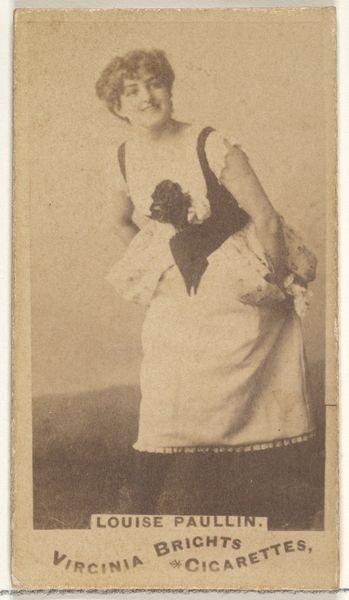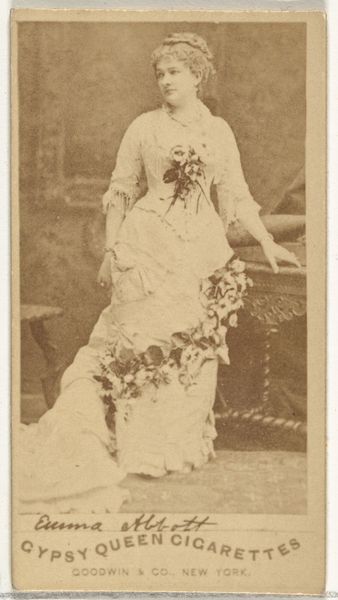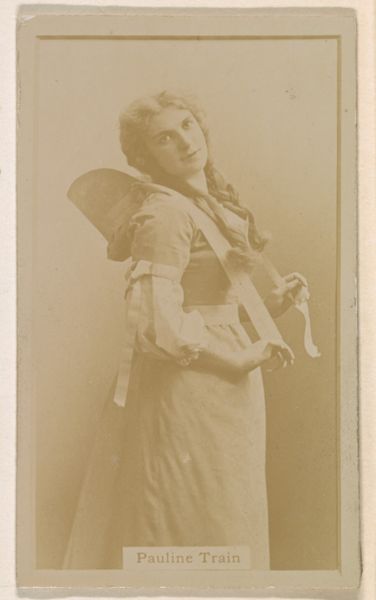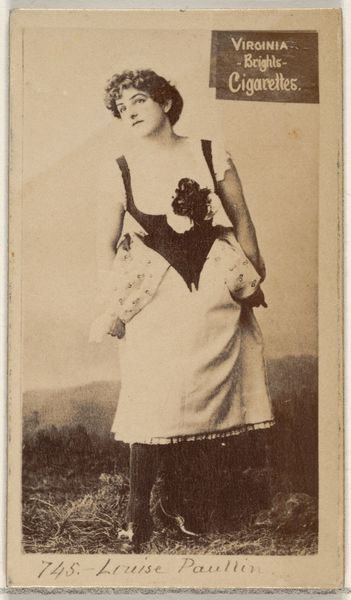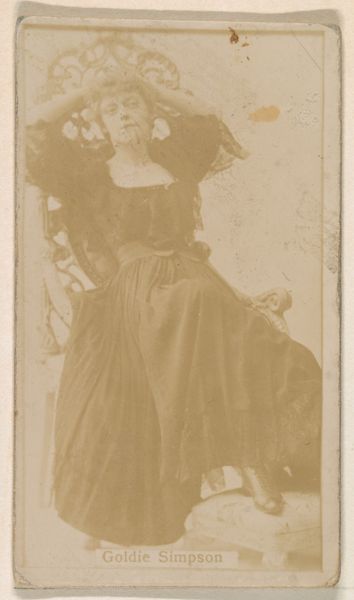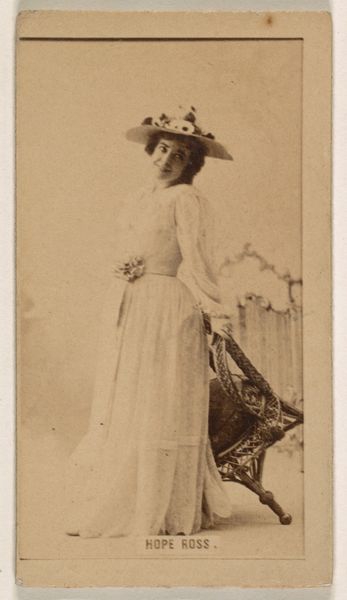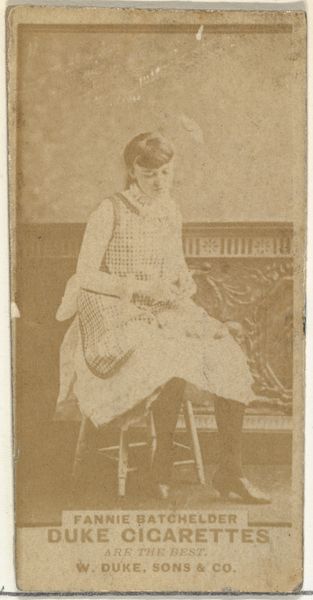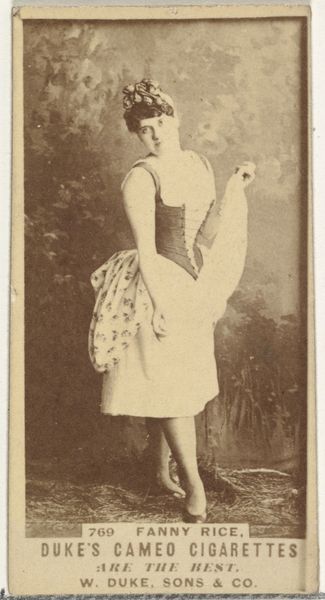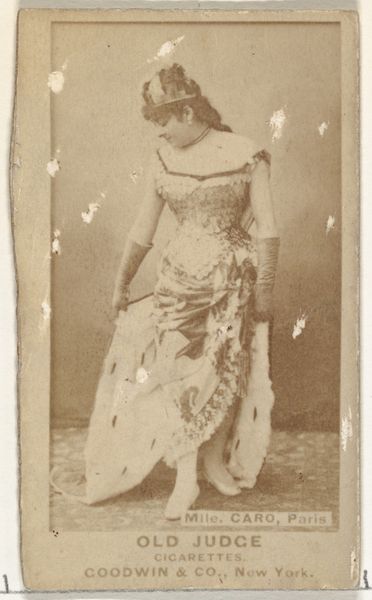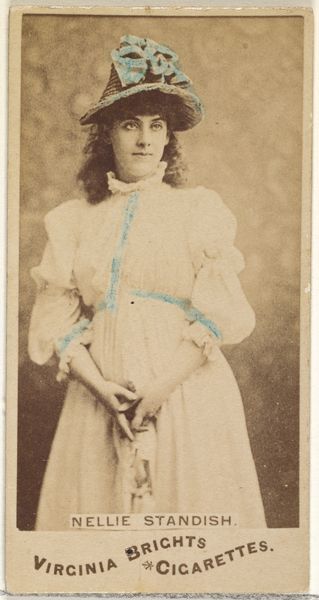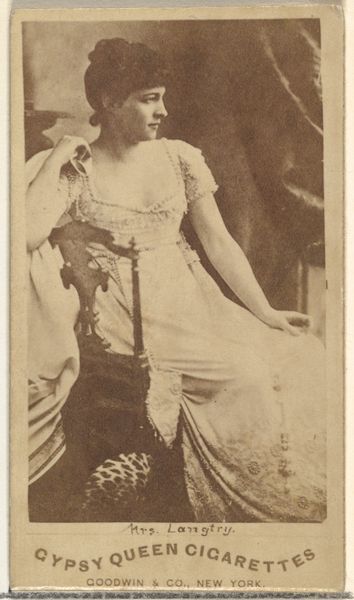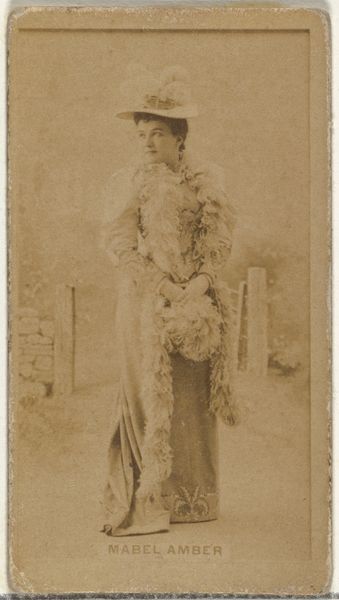
Card Number 48, Madelaine Luccette, from the Actors and Actresses series (N145-6) issued by Duke Sons & Co. to promote Duke Cigarettes 1880s
0:00
0:00
drawing, print, photography
#
portrait
#
drawing
# print
#
photography
#
19th century
Dimensions: Sheet: 2 11/16 × 1 3/8 in. (6.8 × 3.5 cm)
Copyright: Public Domain
Curator: Immediately striking, isn’t it? This is Card Number 48, depicting Madelaine Luccette, a piece hailing from the 1880s. It was issued by W. Duke, Sons & Co. as part of their Actors and Actresses series to promote Duke Cigarettes. Editor: Yes, it feels utterly of its time. There’s a muted sepia tone lending it a fragile, ephemeral air, and you can see the effects of age, but it seems meticulously preserved. A glimpse into late 19th-century manufacturing, really. The photograph, turned into a print for mass distribution… Curator: Indeed, its symbolism is fascinating. The very act of distributing images of actresses via cigarette cards tells a story of aspiration, fame, and the commodification of beauty. Madelaine herself, gazing out so earnestly, carries an aura of hopeful ambition, caught at a fleeting moment in her career. Editor: It's clever how these cards collapsed worlds, isn't it? The elite glamour of the stage printed and dispersed amongst a population increasingly factory-based and craving cheap thrills. Think about the production—the labor, the industrial printing presses churning these out by the thousands, inserting art directly into everyday life via nicotine consumption. Curator: Nicotine consumption which itself had such deeply embedded symbolic connotations! Remember the link between smoking and the bohemian, avant-garde figure, often aligned with theater. Then there's the psychological connection—that allure of relaxation or heightened sensory experience through nicotine, aligning beautifully with theatrical escape. Duke cigarettes *are* the best, proclaims the artwork. The actress lends authenticity and prestige. Editor: Yes! What I also appreciate is how readily these small paper ephemera challenge our usual understanding of high art and popular craft. They point to the means of their production as much as to any attempt to conjure art as disconnected from its industrial roots. What's that paper made of? Where was that photograph developed and printed, and by whom? Curator: An excellent question. As we gaze at this piece, we remember not just Madelaine but the broader social landscape that catapulted her likeness to this distributed form. The echoes of cultural values, ambition, and commodification resound in a little rectangle of paper. Editor: Indeed. Something that may appear simple opens onto layers upon layers of production, labour, cultural expectation, aspiration...A potent little artifact.
Comments
No comments
Be the first to comment and join the conversation on the ultimate creative platform.

